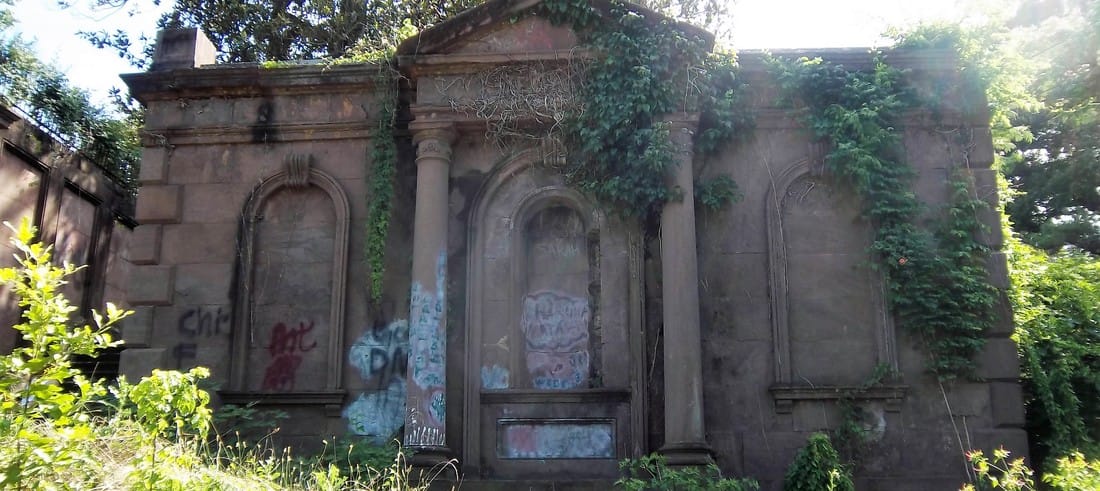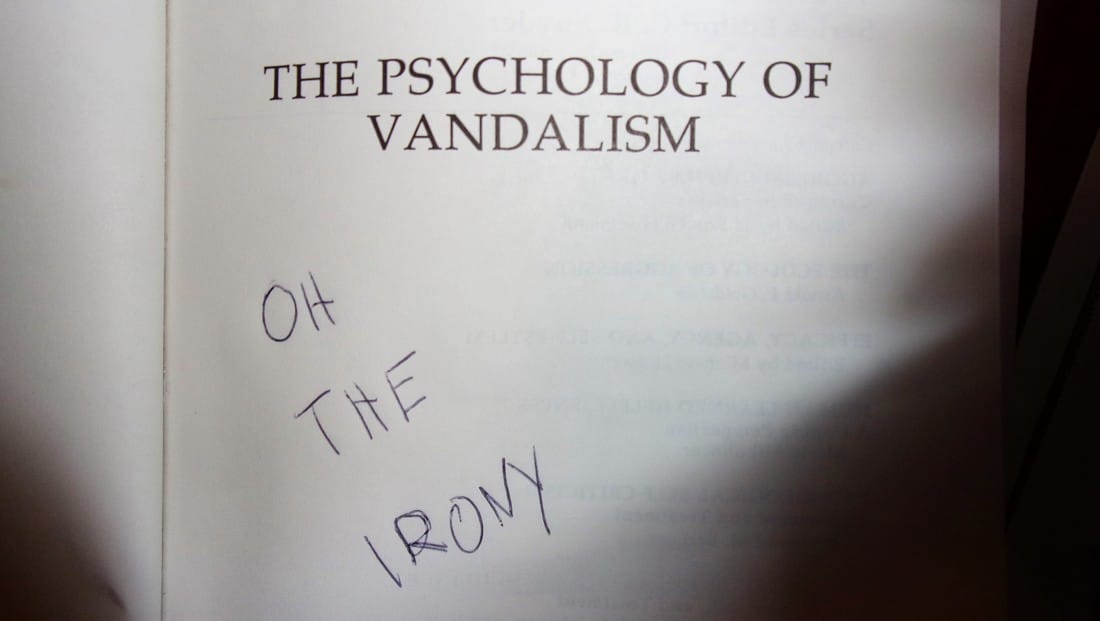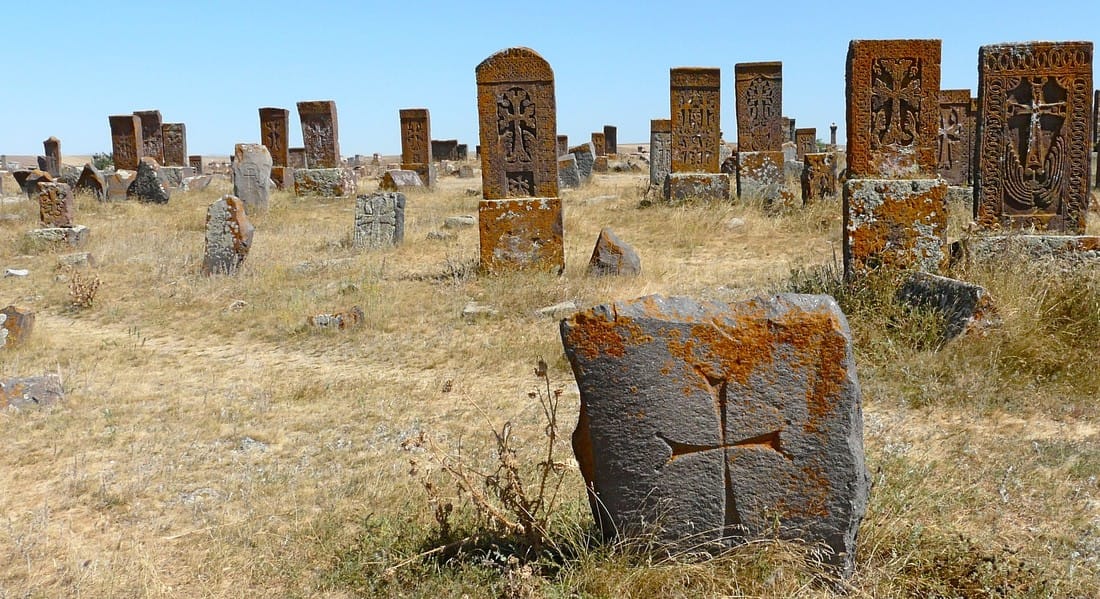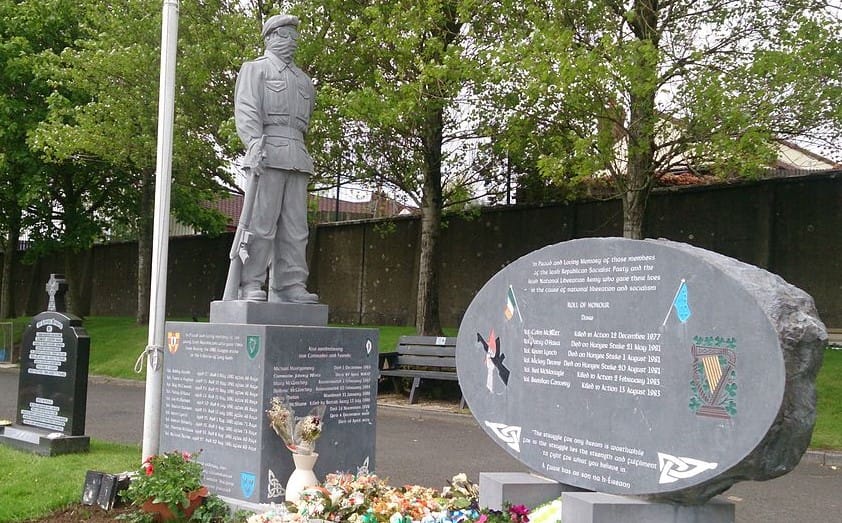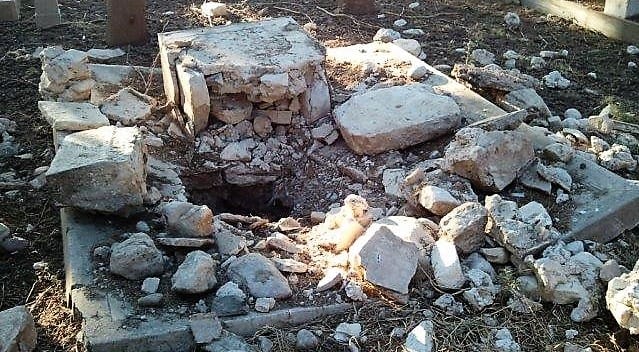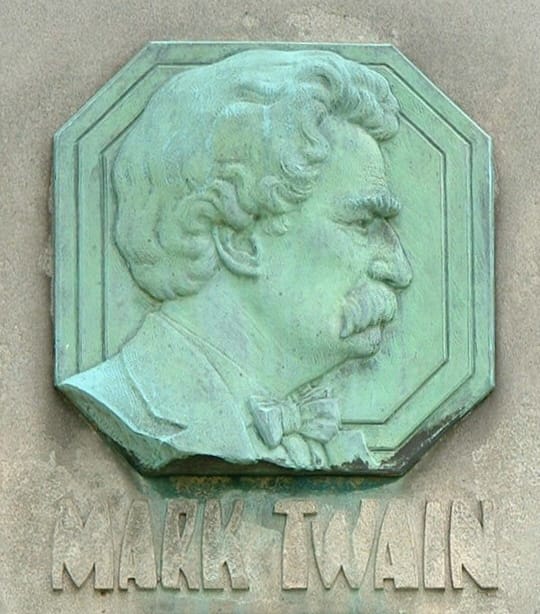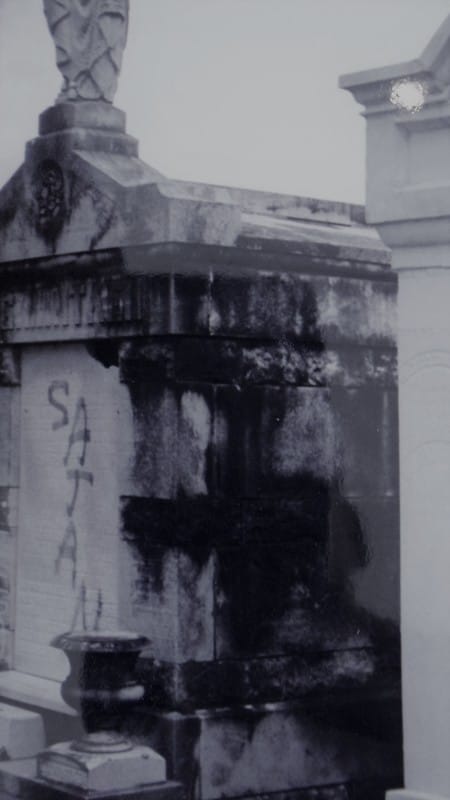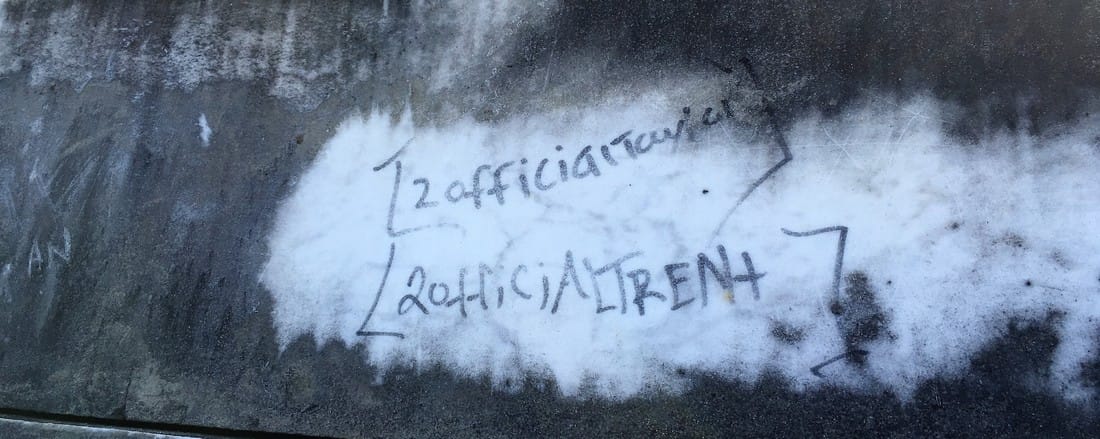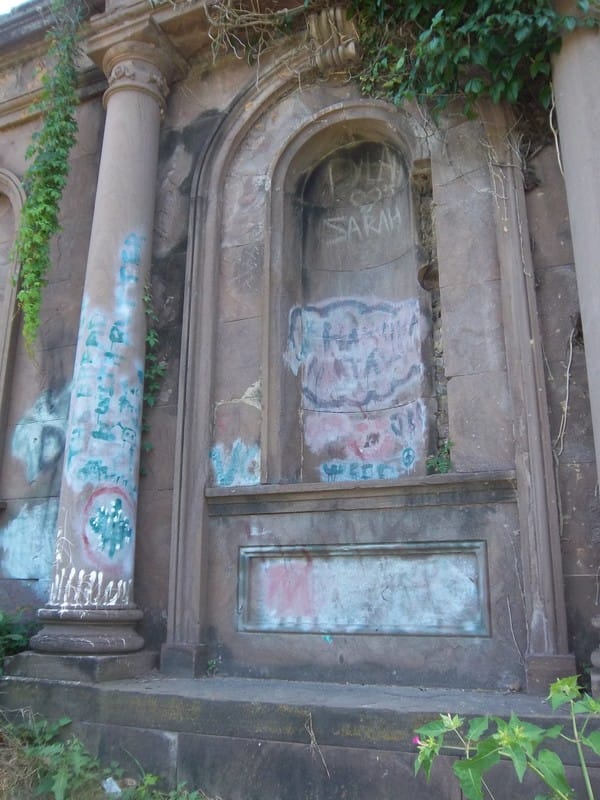|
2016 was a momentous year – but in cemeteries worldwide, it was more or less average for incidences of vandalism. Every year, hundreds of cemeteries suffer crimes of toppled stones, graffiti, desecration of remains, and outright demolition. In the United States, this year at least 1,811 individual markers were affected, costing at least $488,000.[1] Cemetery vandalism is not rare or unusual. Its causes vary from adolescent antisocial behavior to politically, racially, or religiously motivated crimes. The only commonality among most instances of cemetery vandalism is the process through which the crime may have been prevented, and how its effects can be mitigated. While Oak and Laurel Cemetery Preservation, LLC is a New Orleans-based cemetery preservation company, worldwide cemetery vandalism is a special research interest. This blog post is based on an ongoing data collection project based on news reports of cemetery vandalism throughout the year. We catalog each incident, indexing for motivation, type of vandalism (knocked-over headstones, graffiti, theft of grave decorations, etc.), location, and whether an offender is identified and prosecuted. Reports originate primarily in the English-speaking world (United States, Canada, UK, Ireland), but often include English-language reports from Europe, Asia, and the Middle East. Through compiling the entire year’s reports of cemetery vandalism, it is possible to identify some patterns in criminology, reporting, and recovery. So, prepare to get your headstones toppled, this is 2016 in cemetery vandalism. The Psychology of Vandalism Psychological and sociological theories regarding the motivation of vandalism offenders describe the “typical” vandal as a white male, aged 14 to 20, with a background in petty crime.[2] For these offenders, vandalism can be a means of exerting control on a world in which they feel they have little agency (“equity-control theory”). Other explanations include enjoyment theory, which views vandalism as a source of “flow” for an offender inhabiting an otherwise stifled existence, and aesthetic theory, which simply states that vandals tend to target more complex targets than simple ones.[3] Vandalism in cemeteries tends to add a layer of complexity to psychological theory. The significance of the cemetery in any culture is tangible – the cemetery represents overarching themes of death, remembrance, and identity. When a cemetery is vandalized, it can be perceived as a symbolic attack on death itself, or the entire culture represented by the cemetery. This perception goes both ways – both offenders and victims recognize this meaning. To date, no psychological studies have addressed whether the teenager knocking over markers in his neighborhood cemetery is, on some deep Freudian level, attacking the very concept of death. But perhaps someday such research will be conducted. Politically, Racially, and Religiously Motivated Vandalism The notion that cemeteries represent communities both symbolically and functionally is so often visited that it risks becoming cliché. Yet in no other context is this idea more vital and tragic as in incidents of large-scale vandalism. The cemetery as embodiment of group identity is a global concept. In 2016, international conflicts repeatedly manifested in cemeteries. In Poland, cemeteries of fallen Soviet World War II soldiers were vandalized, representing a clash between historic and contemporary perceptions of the Soviet Union. Baha’i cemeteries in Iran were systemically destroyed. And the ongoing border conflict between Azerbaijan and Armenia yielded accusations of cemetery desecration from both sides. Case Study: Derry City Cemetery In Northern Ireland, cemetery vandalism, regardless of motivation, is associated with socio-political sectarianism. Between 2015 and 2016, City Cemetery in Derry/Londonderry was vandalized at least five times, including an arson event. Simultaneously reported as a crime of adolescent perniciousness and motivated by lingering sectarianism, these incidents tie in to the erection of a paramilitary monument in the same cemetery. In nearby Belfast, the vandalism of a Jewish cemetery was viewed as much as an iteration of loyalist/unionist strife as it was an act of anti-Semitism. Derry City Cemetery did not install surveillance cameras until the fifth reported vandalism incident in two years. Presently, the cemetery seeks the draw of tourism as prevention of vandalism, citing the approach taken by Glasnevin Cemetery in Dublin. While Glasnevin may have mitigated incidents of antisocial behavior in this manner, the comprehensive management of Glasnevin Cemetery only partially relies on tourism. The cemetery clearly benefits from intensive public and private investment. In this light, Derry City Cemetery has more in common with Dublin’s Goldenbridge Cemetery, which was vandalized three times in 2014-2016. In the United States Politically, racially, and religiously-motivated vandalism is no stranger to cemeteries in the United States, either. In 2016, amidst national discussions regarding Confederate monuments in public spaces and in the wake of the murders at the Emanual A.M.E. Church in Charleston, Oakwood Cemetery in Raleigh, North Carolina experienced a large-scale vandalism event. In this case, the “well researched” anti-racist graffiti tagged the graves of Confederate and Lost Cause figures. The Raleigh incident was the only reported instance of anti-Confederate vandalism in cemeteries. However, racially-motivated attacks on African American cemeteries took place more commonly in 2016. In June, the African-American section of Greenwood Union Cemetery in Rye, New York was stripped of its Memorial Day flags. In August, a Wagoner County, Oklahoma cemetery was vandalized with racial slurs. In this case, a passerby noticed the graffiti and covered it with sheets before notifying the police. Many more cemetery vandalism incidents occurred at African American cemeteries but were determined not to be hate crimes. Anti-Semitic Vandalism The perception of the cemetery as manifestation of cultural identity is especially pertinent in the case of Jewish cemeteries. Cemeteries, along with places of worship, are symbolic of the community itself and are targeted by anti-Semitic vandals in a nearly pathological manner. Anti-Semitic cemetery vandalism is something to which New Orleans itself is quite familiar: Hebrew Rest Cemetery in Gentilly and Dispersed of Judah Cemetery on Canal street were vandalized with anti-Semitic and Nazi slurs repeatedly in the 1960s.[4] In 2016, three Jewish cemeteries in the United States were subject to this type of hate crime. Within one week in February, Zion Hill and Dreyfus Lodge Cemeteries were both targeted, resulting in forty total headstones toppled. The Hartford, Connecticut incidents were both investigated by police as hate crimes. Although no report suggests a culprit was identified, Dreyfus Lodge Cemetery restored the damage and held a rededication ceremony after repairs. Beth Shalom Cemetery in Warwick, New York, was attacked with anti-Semitic graffiti in October 2016. The exterior wall of the cemetery was marked with swastikas and “SS” insignia, days before its congregation observed Yom Kippur. The historic and systemic use of cemetery vandalism to intimidate and attack Jewish communities was clearly recognized by members of Temple Beth Shalom. In an interview with local Times Herald-Record, Rabbi Rebecca Shinder stated the vandalism “represents hatred and persecution of the Jewish people throughout the centuries. It’s a symbol of hatred and intimidation.” Days after the incident at Warwick, hundreds of community members arrived at Beth Shalom Cemetery to help remove the graffiti. Incidents of anti-Semitic cemetery vandalism were also reported this year in the United Kingdom and Germany. Many other incidents likely occurred but were not reported, or were not pursued as hate crimes. There is a frequently-used and oft-misattributed quote among cemetery people, to the effect of “Show me a civilization’s cemeteries and I will show you how civilized they actually are.[5]” The quote is usually utilized when discussing the cost of funerals or the frequency of maintenance. But it has an alternate relevance in the sphere of criminology – political vandalism, hate crimes, and other identity-targeted cemetery crime is itself a barometer for larger socio-political trends. Show someone a graffitied 9/11 memorial, a broken police memorial, or a defaced Jewish cemetery, and they will see the evidence of something much larger. Adolescent Vandalism: Joyriding, Robo-tripping, and Satanism Identity-based cemetery vandalism is extremely serious and too often falls between cracks. Yet the vast majority (90%) of the 127 specific vandalism incidents in the United States in 2016 were untargeted incidents involving toppled stones, graffiti, and joyriding. In these untargeted instances, 18% resulted in the arrest or identification of an offender, usually within one week of the incident itself. Identified offenders were typically juveniles – mostly boys but frequently girls. Adults were apprehended for more complex crimes than stone-toppling. In Hickory, North Carolina, a municipal cemetery was collateral damage as a 47 year-old man under the influence of alcohol attempted to evade police by cutting through the graveyard, mowing over 20 headstones in the process before crashing into a veterans’ memorial flagpole. In Douglas, Arizona, a 53 year-old man was caught in the act of stealing more than 70 brass memorial plaques which he intended to sell at a scrapyard.
“Kid”-associated vandalism also seems to bring with it a deliberate “shock” value. In Tennessee and Arizona, cemeteries were tagged with “satanic” graffiti – pentagrams, “666” and other insignia associated with the occult. In the case of San Xavier del Bac Mission cemetery in Arizona, the local Satanic church was contacted for comment and repudiated the act as something unassociated with their group. It should also be noted that this behavior is not restricted to juveniles: a 56 year-old man in Yorkshire, England was arrested in June 2016 for spray painting a cemetery with similar markings.
Some observations of the 184 reports of cemetery vandalism in 2016 offer these suggestive do’s and don’ts: DON’T:
DO:
Preventing and Recovering from Vandalism Most cemeteries, and especially historic ones, are managed by companies or groups with extremely meager funds. Even cemeteries with considerable endowments often operate with high overhead and little left over after basic maintenance costs. Cemetery vandalism is costly to reverse. The cheapest way to recover from cemetery vandalism is to prevent it. If there ever was a “spike” in cemetery vandalism, it happened in the 1960s, coinciding shifts by cemetery authorities to remove full-time staffing from their properties. Full-time staffing permits cemeteries to control the landscape in a way no other management practice can. Secondly, documentation of any cemetery’s current condition is of utmost importance if vandalism is to be identified in the future. Regular photographs of any property (taken either by the property owner or the cemetery authority) are invaluable in controlling vandalism. Maps, measured drawings, and databases are the armor that can protect a cemetery from tens of thousands of dollars in damage. When cemetery vandalism occurs, it must be reported to local law enforcement. Most law enforcement agencies are unaware that cemetery vandalism is an issue. While filing a police report may not produce an arrest, it does produce an important record for the cemetery authority and (where applicable) insurance responses.[6] When the time comes to make repairs, don’t hurry at the expense of quality. Cemetery preservation is a professional discipline populated by experts who have studied methods and materials for years. Sparing expense to make repairs can result in damage that is much more harmful to markers and headstones than the vandalism may have caused in the first place. Proper repairs can facilitate insurance claims, as well. Direct public interest. Take control of the cemetery’s story. Public interest in the preservation of any cemetery is important even before vandalism occurs. After it takes place, enjoining the cooperation of the public can spell the difference between success and failure. It can even prevent vandalism from taking place again. Many cemetery authorities invite volunteers, hold fundraisers, and fun events that introduce the potential vandal to a welcoming, important place. The fifteen year-old that comes to your cemetery movie night might even be the one who stops his friends from tipping a headstone in years to come.[7] Cemetery vandalism is a cultural occurrence which will never be entirely eradicated. But it can be better understood and studied. That way, in 2017, perhaps prevention may be more robust and recovery swifter. [1] Based on 184 news reports from January 2016 to December 2016, only some of which reported the exact number of markers effected and an exact estimation of repair costs. As many instances of cemetery vandalism are never reported, and most costs are not reported, it is reasonable to assume these statistics are much greater.
[2] Arnold P. Goldstein, The Psychology of Vandalism (New York: Plenum Press, 1996), 24. [3] Ibid. [4] Emile Lafourcade, “Vandals Strike Jewish Graves: Headstones are Painted with Swastikas,” Times Picayune, July 2, 1967, 1; “Cemetery Vandalism,” Times Picayune, January 21, 1967, 10 (this incident also involved swastikas); “Vandals Paint Gravestones: Hit Dispersed of Judah Cemetery,” Times Picayune, October 27, 1965, 22 (also swastikas). [5] Other variations: “Show me the cemeteries of a country, and I will tell you of its culture, its civilization” (attributed to Tallyrand), “Show me your cemeteries and I will tell you what I think of your people,” (attributed to Benjamin Franklin), and “Show me the manner in which a nation cares for its dead and I will measure with mathematical exactness the tender mercies of its people, their respect for the laws of the land and their loyalty to high ideals” (attributed to Sir William Gladstone). [6] John Eck, “Preventing Theft and Vandalism in Cemeteries,” Annual Conference of the Association for Gravestone Studies, Salem, OR, 2013. [7] Kuri Gill, “Preventing Vandalism,” Annual Conference of the Association for Gravestone Studies, Salem, OR, 2013.
7 Comments
Jen Maxfield
2/27/2017 12:57:23 pm
Hi, I'm a reporter for NBC in NY covering the recent vandalism incident at a Jewish cemetery in Philadelphia. Do you have a source for official crime stats on this acts in the U.S.? Thanks
Reply
Emily Ford
2/27/2017 06:10:01 pm
Hi Jen,
Reply
3/1/2017 02:13:51 pm
Emily, I'm sure your report would be welcome here at the following link and Jen, although it is not yet a working database, you may want to keep it on your radar for future reference. I found it while working on a freelance article. https://projects.propublica.org/graphics/hatecrimes
Reply
Emily Ford
3/1/2017 02:24:25 pm
Dear Lori - thank you so much for sharing this. I'll reach out to share what I've documented so far.
Reply
Emily, I'm certain your report would be welcome here at the accompanying connection and Jen, despite the fact that it is not yet a working database, you might need to keep it on your radar for future reference. I discovered it while taking a shot at an independent article.
Reply
Leave a Reply. |
About the Author:Emily Ford owns and operates Oak and Laurel Cemetery Preservation, LLC. Archives
November 2019
Categories
All
|
- About
-
Restoration
- Services
-
Portfolio
>
- Turning Angel Statue, Natchez, MS
- Ledger Monument, Baton Rouge, LA
- Pyramid Statuary, New Orleans, LA
- Bronze and Granite Monument, Carville, LA
- Box Tomb, New Orleans, LA
- Vernacular Concrete Monument, Pensacola, FL
- 1830s Family Tomb, Covington, LA
- 1850s Family Tomb, New Orleans, LA
- 1880s Family Tomb, New Orleans, LA
- Headstone and Monument Restorations, Pensacola, FL
- Society Tomb, New Orleans, LA
- Education
- Blog
- Contact
|
Oak and Laurel Cemetery Preservation, LLC is a preservation contractor in New Orleans, Louisiana, specializing in historic cemeteries, stone conservation, educational workshops and lectures. Oak and Laurel serves the region of the Southeastern US.
|
QUICK LINKS |
CONNECT |
Proudly powered by Weebly

